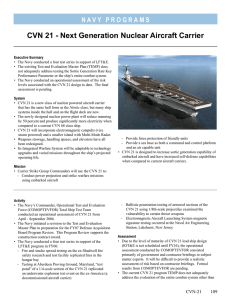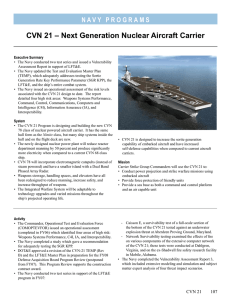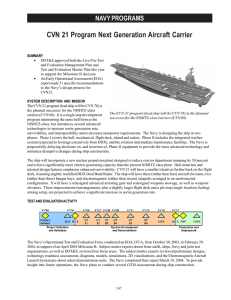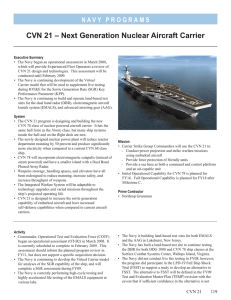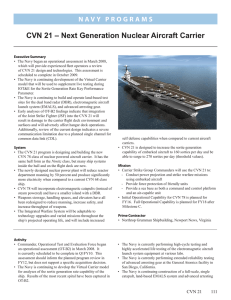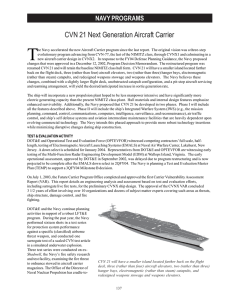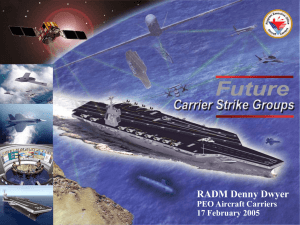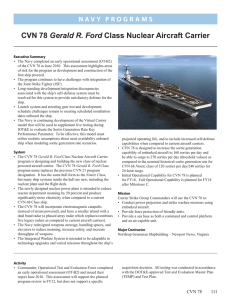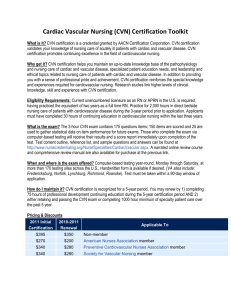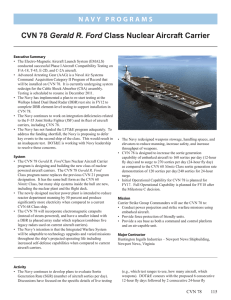CVN 21 - Next Generation Nuclear Aircraft Carrier
advertisement
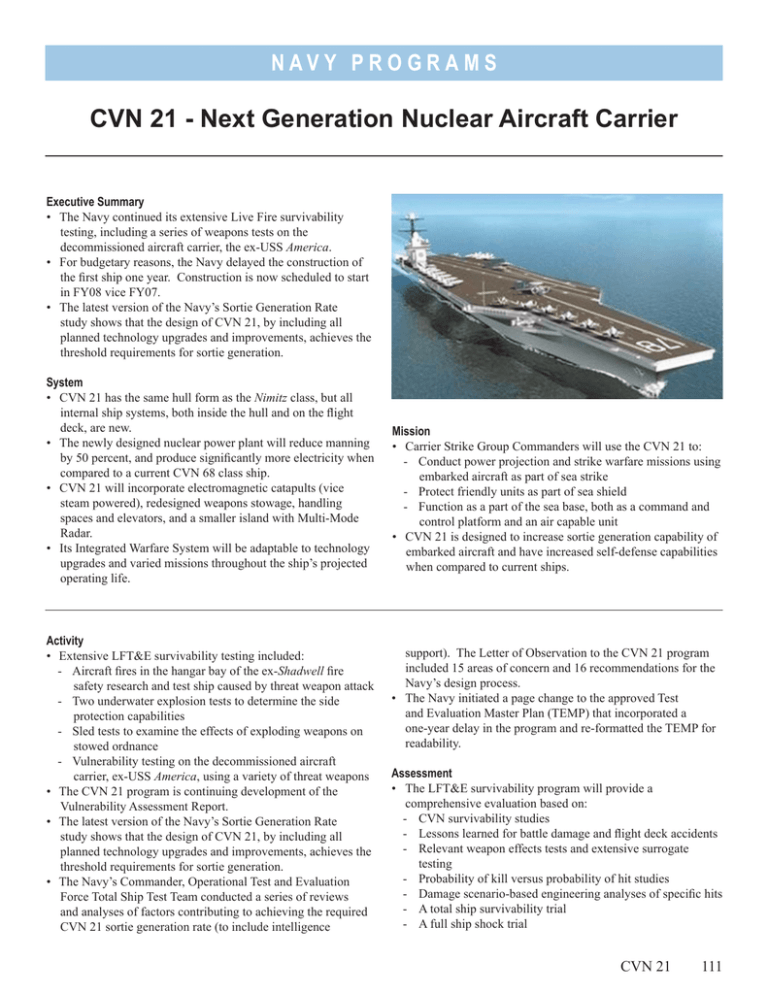
N AV Y P R O G R A M S CVN 21 - Next Generation Nuclear Aircraft Carrier Executive Summary • The Navy continued its extensive Live Fire survivability testing, including a series of weapons tests on the decommissioned aircraft carrier, the ex-USS America. • For budgetary reasons, the Navy delayed the construction of the first ship one year. Construction is now scheduled to start in FY08 vice FY07. • The latest version of the Navy’s Sortie Generation Rate study shows that the design of CVN 21, by including all planned technology upgrades and improvements, achieves the threshold requirements for sortie generation. System • CVN 21 has the same hull form as the Nimitz class, but all internal ship systems, both inside the hull and on the flight deck, are new. • The newly designed nuclear power plant will reduce manning by 50 percent, and produce significantly more electricity when compared to a current CVN 68 class ship. • CVN 21 will incorporate electromagnetic catapults (vice steam powered), redesigned weapons stowage, handling spaces and elevators, and a smaller island with Multi-Mode Radar. • Its Integrated Warfare System will be adaptable to technology upgrades and varied missions throughout the ship’s projected operating life. Activity • Extensive LFT&E survivability testing included: - Aircraft fires in the hangar bay of the ex-Shadwell fire safety research and test ship caused by threat weapon attack - Two underwater explosion tests to determine the side protection capabilities - Sled tests to examine the effects of exploding weapons on stowed ordnance - Vulnerability testing on the decommissioned aircraft carrier, ex-USS America, using a variety of threat weapons • The CVN 21 program is continuing development of the Vulnerability Assessment Report. • The latest version of the Navy’s Sortie Generation Rate study shows that the design of CVN 21, by including all planned technology upgrades and improvements, achieves the threshold requirements for sortie generation. • The Navy’s Commander, Operational Test and Evaluation Force Total Ship Test Team conducted a series of reviews and analyses of factors contributing to achieving the required CVN 21 sortie generation rate (to include intelligence Mission • Carrier Strike Group Commanders will use the CVN 21 to: - Conduct power projection and strike warfare missions using embarked aircraft as part of sea strike - Protect friendly units as part of sea shield - Function as a part of the sea base, both as a command and control platform and an air capable unit • CVN 21 is designed to increase sortie generation capability of embarked aircraft and have increased self-defense capabilities when compared to current ships. support). The Letter of Observation to the CVN 21 program included 15 areas of concern and 16 recommendations for the Navy’s design process. • The Navy initiated a page change to the approved Test and Evaluation Master Plan (TEMP) that incorporated a one-year delay in the program and re-formatted the TEMP for readability. Assessment • The LFT&E survivability program will provide a comprehensive evaluation based on: - CVN survivability studies - Lessons learned for battle damage and flight deck accidents - Relevant weapon effects tests and extensive surrogate testing - Probability of kill versus probability of hit studies - Damage scenario-based engineering analyses of specific hits - A total ship survivability trial - A full ship shock trial CVN 21 111 N AV Y P R O G R A M S • DOT&E approved both the LFT&E Management Plan and the TEMP in March 2004. DOT&E expects to approve the TEMP page change in December 2005. We expect both the TEMP and LFT&E Management Plan to be revised during 2006 to support a FY07 Defense Acquisition Board program review. 112 CVN 21 Recommendation 1. The CVN 21 design program should thoroughly evaluate the recommendations in the Operational Test and Evaluation Force Letter of Observation in the design process.
